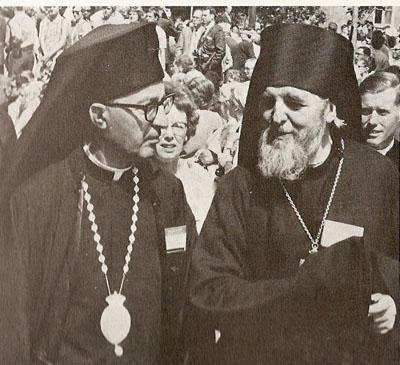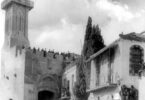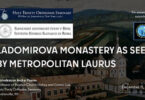Valerian (Trifa), the former OCA Archbishop of Detroit, passed away on this day in 1987.
In the 1930s, most of Eastern Europe came under various right-wing regimes. In Romania, in 1940, General Ion Antonescu took over from the British-oriented King Carol II of Romania. Initially, he shared power with the Iron Guard party (Legionnaires), which became the ruling party of the country. Antonescu abandoned the Constitution and Germans stationed troops in Ploiești to protect the oil fields there.
For the Legionnaires, Antonescu was not far enough to the right, and they began “cleansing” the country of liberals and “Jewish conspirators.” At the end of 1940, Nikolae Iorga, a Romanian scholar, was killed. Iorga had coined the term Byzantium after Byzantium in his eponymous monograph (Byzance après Byzance), defining the cultural and political continuity of the Eastern Roman Empire following its collapse in 1453.
Hitler, apparently, saw in the Iron Guards young idealists similar to his own brownshirt movement. Reluctantly, he promised Antonescu not to interfere in his standoff with the Legionnaires. Early in 1941, they revolted against Anatonescu. As a result of the ensuing pogrom, around 100 Romanians and Jews were killed in Bucharest.
Viorel Trifa, who graduated magna cum laude from the theological department of the University of Chişinău and studied journalism in Berlin prior to World War II, was actively involved in the antisemitic campaign as President of the National Union of Romanian Christian Students, an affiliate of the Iron Guards. Following the defeat of the revolt, Trifa fled to the Third Reich, where, before the end of World War II, he was interned with special status in concentration camps: Sachsenhausen, Buchenwald and Dachau. The Romanian authorities sentenced him in absentia to life in prison.
After World War II, Trifa was secretary in Vienna to Metropolitan Visarion (Puiu), who had been bishop of Hotin since 1923 (the see that belonged to the Russian Archbishop and later Metropolitan Anastassy Gribanovskii). In the diaspora, Metropolitan Visarion actively collaborated with the Russian Church Abroad.
In 1950, Trifa arrived in America, and in 1957, he became a naturalized citizen. In 1952, Trifa was tonsured a monk and consecrated a bishop by Metropolitan John (Theodorovich, originally of the self-consecrated Ukrainian hierarchy, but re-consecrated in 1949) and two other bishops. He formally subordinated to the Romanian Patriarchate.
In 1960, Valerian was received into the North American Metropolia along with his parishes through re-consecration. During his episcopacy, he consecrated numerous clergy, actively developing his diocese and interacting with other Orthodox churches in America.
In 1975, the US Department of Justice opened a case revoking his US citizenship based on the fact that he had concealed his membership in the Iron Guards. Archbishop Valerian admitted to the concealment of this information. In 1980, to avoid deportation to Romania, Archbishop Valerian gave up his US passport and moved to Portugal, where he passed away two years later.











